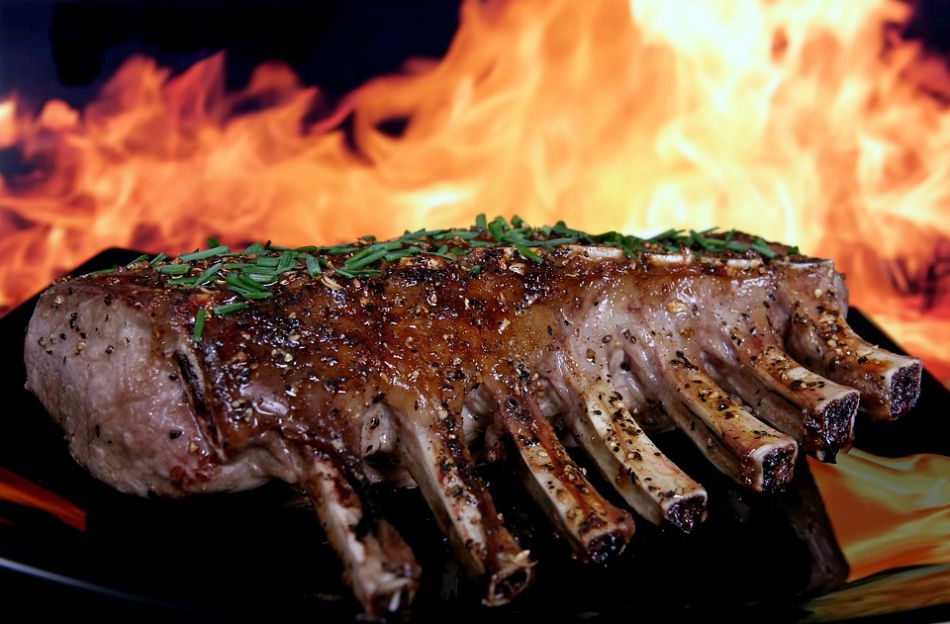Is Red Meat Good For You?
What’s With Red Meat?
Is red meat good or bad for you? These are the secrets meat producers keep!
By Travis Wade
Let’s dig into the world of meat, shall we? Red meat is what you get when you slice into a mammal and find flesh that’s red while raw. Think beef, lamb, venison, moose, elk, goat, or buffalo—it’s like a who’s who of the mammalian protein club. It’s red because of myoglobin, that iron-binding protein that makes your steak look like it’s ready to bench press.
Now, white meat—the lighter cousin—is what you get when there’s less myoglobin hanging around. Throw it on the grill, and it turns a pleasant shade of golden brown, like it just came back from vacation. Poultry and fish are your usual suspects here, although some types, like tuna, like to blur the lines. It’s the meat world’s way of saying, “Don’t box me in.”
Here’s where it gets messy. The classification of meat into red or white isn’t as cut-and-dried as your butcher makes it seem. The USDA, gastronomists, chefs, and nutritionists all have their say, and like every family reunion, no one agrees. Enter the “pink” meats: pork, veal, duck, goose, rabbit, tuna, and salmon. They’re not really red or white—they’re the Switzerland of meat. Neutral, but full of personality.
So, if someone argues over what kind of meat your dinner is, just say, “It’s pink,” and move on. Life’s too short to overthink your proteins!
Is Red Meat Bad For You?
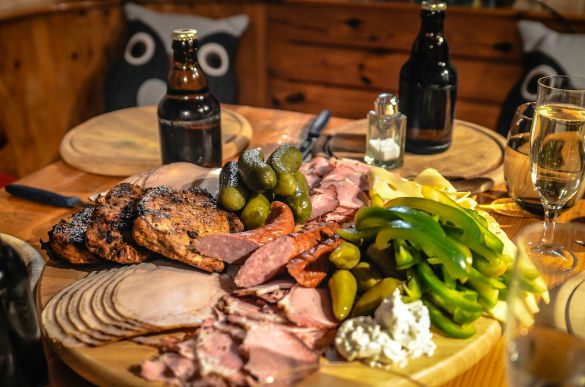
Let’s talk about the world of food tribes: vegans, vegetarians, paleo dieters, and those fearless carnivore dieters. Vegans draw a hard line—no meat, no animal products, not even a hint of cheese on their pizza. Vegetarians? They’re a little more lenient, skipping the steak but saying yes to omelets and milkshakes. Paleo folks? They’re all about the meat, as long as it feels like something a caveman would eat. And carnivore dieters? Oh, they’re out here thinking salad is a conspiracy.
So, is red meat good or bad for you? That depends. I’m not stalking your local ranchers (and I don’t recommend you do either) but I have spoken to a few. Most of what I know comes from scientists who do the heavy lifting on studies, not from farmers explaining their grass-fed philosophies over coffee. But here’s a safe bet: whether it’s big business or small-scale operations, everyone is looking to cut costs—so proceed with a dash of skepticism and maybe a side of broccoli.
Now, let’s get real. Red meat has a reputation problem, and most of it comes from the commercially raised stuff. According to Dr. Mark Hyman (a guy with enough credentials to make your head spin), every study trashing red meat points to meat from factory farms. Think of it like this: blaming all red meat for the sins of factory farms is like judging all movies based on the worst ones in the franchise. (Yes, I’m looking at you, Fast & Furious 37.)
So, if you’re worried about your steak, it’s not the red in the meat that’s the issue—it’s the green in the business model. Choose wisely, and your gut will thank you.
Glyphosate
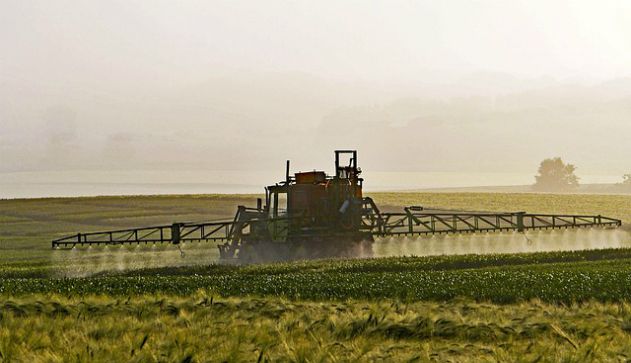
Let’s dive into glyphosate, a word that sounds like it belongs in a sci-fi villain’s manifesto but is actually a real-world nightmare. This chemical is not just lurking around—it’s causing chaos. Fun fact (well, horrifying fact): glyphosate was originally patented as an antibiotic. Yep, an antibiotic that kills everything, not just bacteria. It’s the Thanos of chemicals, snapping away the life out of everything it touches.
Now, glyphosate is also a chelator, which means it has a knack for stealing minerals. Think of it like the ultimate party crasher—shows up, grabs all the good stuff (your minerals), and leaves your body to clean up the mess. Inside you, it binds to those minerals and flushes them away, leaving your body crying out for the nutrients it desperately needs. It’s basically Marie Kondo-ing your insides, but instead of sparking joy, it’s sparking health problems.
Speaking of health problems, glyphosate doesn’t stop at stealing your minerals. It also busts through the lining of your gut like a wrecking ball. This leads to Leaky Gut Syndrome, where oversized molecules escape into your bloodstream, and your immune system freaks out like it’s a bad episode of Cops. Your body, thinking it’s under attack, goes all out with system-wide chronic inflammation—like setting the kitchen on fire because you saw one cockroach.
Chronic inflammation is the slow-burn villain of modern health. It’s supposed to be your body’s emergency response system, not a 24/7 operation. When inflammation sticks around too long, your immune system starts attacking your own tissues. This is how we end up with autoimmune diseases like Hashimoto’s Thyroiditis, Rheumatoid Arthritis, or even Restless Leg Syndrome—the one disease that makes even sitting down too much work. Add to that a list of other conditions linked to glyphosate, and it’s no wonder Monsanto’s legal team was busier than a drive-thru at midnight.
Here’s the kicker: glyphosate is the main ingredient in Round-Up, and it’s sprayed all over grains. Those grains are then fed to commercially raised animals, meaning glyphosate doesn’t just stop at the crops—it ends up in the red meat you eat. So the next time you grab a burger, you might want to ask yourself: “Am I eating beef… or Round-Up in disguise?”
Genetically Modified Organisms (GMOs)
Let’s talk about GMOs, the ultimate “Frankenfood” of our time. When paired with glyphosate, GMOs are like the toxic couple in every reality show—they cause chaos wherever they go. Together, they’re linked to a laundry list of diseases, and they make improving your health and fitness feel like an uphill battle… on a treadmill that someone cranked to max incline without warning.
Now, a full breakdown of GMOs would require more time and space than this blog allows (and, honestly, a strong drink). But fear not—read my article on the subject here. Think of it as your GMO survival guide. In the meantime, here’s the short version: don’t let your red meat eat GMOs. Seriously. If your steak’s been dining on genetically modified products, it’s time to swipe left. You want beef, not science fiction.
Do the Red Meats You Consume Eat Grains?

Let’s break this down because we’re wading into some heavy territory—grains, antibiotics, and estrogen. It sounds like the start of a bad sci-fi novel, but it’s real life.
Grains
First up, grains. Animals are fed grains because they’re cheap and make them fat quickly—kind of like how fast food affects us. Grains come with a bonus package of glyphosate and mycotoxins (as if one toxin wasn’t bad enough). Mycotoxins are like the evil villains of the food world—they’re neurotoxins and some of the most potent carcinogens out there.
Even non-GMO grains aren’t innocent because they get sprayed with glyphosate too, which “ripens” them faster (read: kills them quicker). And while these grains bulk up animals, they strip away their nutrients, leaving you with a burger that’s more toxin than treasure. It’s like paying for premium gas and getting sugar water instead.
Antibiotics
Once upon a time, meat producers stumbled upon a magical discovery: antibiotics make animals fat. They didn’t know why, but hey, results! Today, we know antibiotics kill off the bacteroidetes—the skinny bacteria—and let the firmicutes—the fat-making bacteria—take over. It’s like evicting your gym coach and giving the keys to a pastry chef.
The kicker? A whopping 80% of antibiotics used are for animals. So if you’re eating commercially raised meat, congratulations, you’re indirectly swallowing antibiotics and letting your own gut bugs duke it out. Spoiler: the fat bugs usually win.
Estrogen
And now, the pièce de résistance: estrogen. Meat producers use zeranol, a fungal estrogen that fattens animals faster while saving on feed costs. It’s like steroids for farm animals, except it’s banned in Europe because it’s also a mycotoxin. Europe looked at North American meat and said, “No thanks, we’ll stick to croissants.”
But zeranol isn’t the only villain here. We’ve also got xenoestrogens and phytoestrogens—fake estrogens lurking in plastics, soy, beauty products, and even some plants. These sneaky substances mimic estrogen in your body, like a bad impersonator at a talent show. Sure, they’re not the real deal, but they still mess with your hormones, proving that even plants can hold grudges.
In summary, if you’re eating grain-fed, antibiotic-packed, estrogen-boosted meat, you might want to reconsider your menu. And while you’re at it, check your beauty products too—because apparently, we’re marinating in estrogen from all angles!
Is Red Meat Good For You?
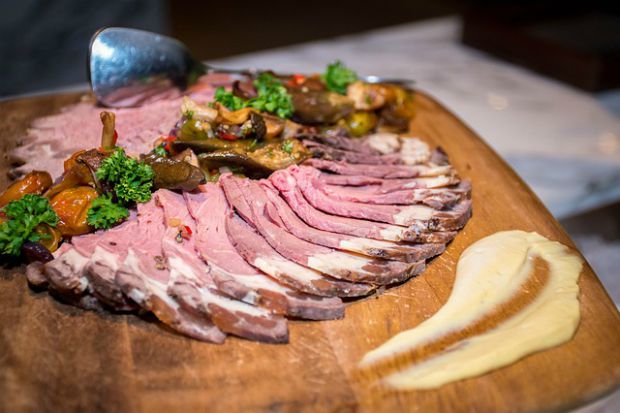
Why Bother Eating Red Meat at All?
It’s a fair question—should we ditch the steaks and follow the vegans to plant paradise? They’ve got a solid point about commercially raised red meat, which is less “farm to table” and more “toxic treadmill.” Add environmental concerns, and it’s easy to see why they wave the “no meat” flag.
But here’s the twist: not all red meat is created equal. If your meat is high-quality, grass-fed, and grass-finished (translation: the cow ate grass its whole life and not a single donut), it’s packed with nutrients. And let’s not forget wild game—venison, elk, moose—it’s basically nature’s multivitamin with legs. Think of it as the VIP section of the meat world.
The Nutrient Jackpot
Here’s the thing: while we likely need most of our nutrients from plants (your body is unique, not a one-size-fits-all factory), red meat offers nutrients that are hard to match elsewhere. Iron, zinc, and vitamin B12 are the headliners, but don’t sleep on ubiquinol, collagen, creatine, carnosine, and some rare amino acids.
For vegans, getting these nutrients is a bit like winning the lottery—it’s possible, but it takes planning, strategy, and maybe a little luck. Without them, the consequences can be significant, ranging from fatigue to weakened immunity to, let’s face it, being really bad at trivia about animal protein.
So, should you eat red meat? If it’s the right kind—high-quality, nutrient-packed, and ethically sourced—it can be a fantastic addition to your diet. But if it’s the kind of meat that spent its life in a pen eating grain and antibiotics, maybe think twice. Your body deserves better, and frankly, so does your plate.
Iron
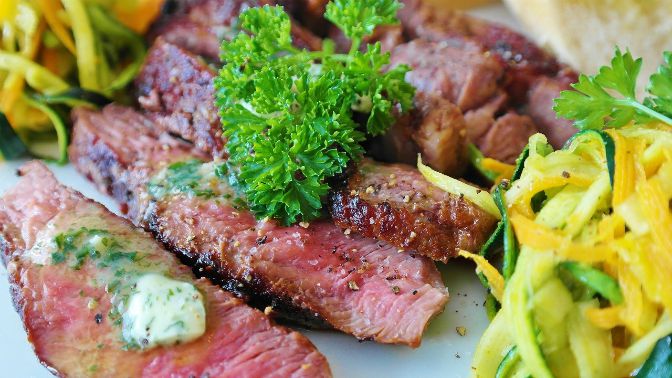
Irony in Red Meat
I like to test my clients’ knowledge with a little trivia: “Do you know what makes red meat red?”
They often respond, “Blood?”
“Bingo! But what’s in the blood that gives it that red hue?”
They look puzzled. “Hemoglobin?”
“Right again! Now, what’s in the hemoglobin that makes it red?”
Cue the silence. “I don’t know.”
The answer? Iron. Yeah, the same iron that covers your car in rust is also what keeps you, well, alive. Without it, you can’t produce red blood cells. And when you don’t have red blood cells, your oxygen-carrying capacity plummets, and with it, your energy levels. When you’re low on iron, it’s like trying to run a car on fumes—you’re just not going anywhere.
Now, if that wasn’t enough reason to get some red meat in your life (or at least find a good source of iron), let me break it down for you: Iron is one of the most common deficiencies in North America. So, if you’re feeling tired all the time, don’t blame your job or the kids—maybe it’s time to take a look at your iron intake!
Red Meat Is Also High in Zinc
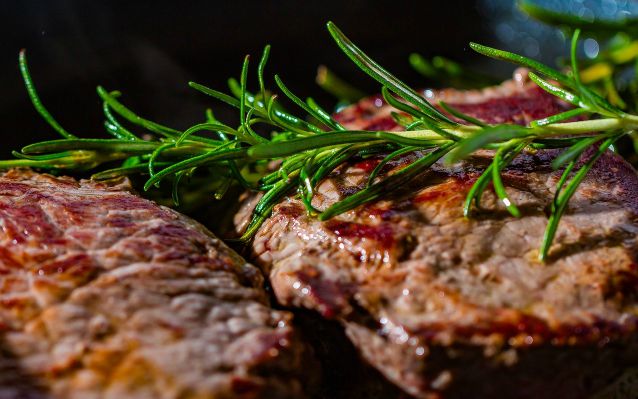
The Zink About It
Got dry skin or dandruff? Well, before you start blaming the winter weather or your stressful work emails, let me hit you with some knowledge: Do you know what the active ingredient is in dandruff shampoo?
If you said “zinc,” give yourself a gold star! If not, no worries—I got you. Zinc is the secret sauce your body needs to keep your skin from looking like the Sahara Desert. Without zinc, not only will your skin be as dry as that one friend who never texts back, but you’ll also struggle to build up your connective tissue.
Now, why should you care about connective tissue? Well, that’s what keeps everything in your body together—from your skin and bones to your muscles, blood vessels, and even your gut lining. Basically, zinc is like the glue that holds your body together. And guess where you can find some of the best sources of zinc? That’s right—red meat. So, the next time you’re dealing with flaky skin or dandruff, you might just need a little more zinc in your life. Or, you know, maybe a juicy steak. Either way, your body will thank you!
Ubiquinol: The Unsung Hero of Energy Production
Let’s talk about ubiquinol, folks. Sounds fancy, right? But it’s actually the active form of coenzyme Q10, and it’s like the personal trainer for your cells. One of its main jobs is to boost energy production in the mitochondria—those little powerhouses in your cells that keep you running. It also cleans up the mess left behind after energy production, so you’re not left with a bunch of dirty dishes (figuratively speaking, though, that would be nice too).
Without enough ubiquinol, your energy levels drop faster than your Wi-Fi signal on a Zoom call, and the by-products of energy production start damaging your cells. Not a great look. So, if you’re feeling sluggish and like your body needs a good cleaning crew, consider adding more ubiquinol into your diet. And where can you get this magical energy-boosting, mess-clearing compound? You guessed it—red meat is a top source. So, if you’re looking to fuel up and keep things running smoothly, maybe skip the energy drink and grab a steak instead. Your mitochondria will thank you.
Red Meat and Collagen

Collagen: The Unsung Hero of Your Body’s Structure
Let’s talk about collagen, the stuff that holds you together—literally. It’s in your skin, blood vessels, muscles, bones, and even your gut lining. Basically, it’s the duct tape of the human body. But here’s the kicker: collagen is only found in animal products. So, if you’re not eating animal-based foods, you might as well be walking around with a broken IKEA bookshelf (and we all know how that ends).
So, how can you add collagen to your diet without turning into a walking, talking gelatin mold? Simple—bone broth and red meat are packed with it. Not just collagen, but also the essential nutrients like zinc, magnesium, calcium, L-glutamine, proline, and glycine—all the good stuff your body needs to heal and grow its connective tissues. Oh, and if you’ve got Leaky Gut Syndrome (who doesn’t these days?), bone broth is pretty much your secret weapon, —it’s like a VIP pass for your gut.
Sure, your body makes some collagen on its own, but why not give it a little help? The L.A. Lakers swear by bone broth as part of their training regimen, and guess what? They have the fewest injuries in the NBA. So, while your knee might be creaking like a haunted house door, maybe it’s time to slurp down some bone broth and turn your body into an injury-free, collagen-powered machine. Dr. Natasha Campbell-McBride, a gut health expert, doesn’t mince words—meat and bone broth are non-negotiable if you want your gut to work properly. So, go ahead, get your collagen on! Your body will thank you, and maybe even your muscles will too.
Vitamin B12: The Unsung Hero of Your Body’s Systems
Vitamin B12 is like the backstage crew of your body—it’s always working hard, but rarely gets the spotlight. Yet, it’s the fifth leading nutrient deficiency in North America, which is a bit like failing a pop quiz that everyone forgot to study for. B12 is essential for just about every system in your body: energy production, blood formation, DNA synthesis, and keeping your nervous and immune systems running smoothly. No big deal, right?
Now, here’s where it gets interesting: if you’re low on B12, your body starts to feel like a broken-down machine. Think weakness, fatigue, tingling in your extremities (no, not the good kind), brain fog, memory problems, sleep disturbances, mood swings, and a lack of motivation. Suddenly, your “I’ll do it tomorrow” attitude becomes a permanent lifestyle.
And if that’s not enough, a B12 deficiency can lead to some pretty serious conditions, including depression, dementia, Alzheimer’s, cardiovascular disease, anemia, and even brain damage. So, yeah, it’s kind of a big deal.
How can you avoid this mess? Simple: Eat red meat. It’s loaded with vitamin B12, which will help you avoid those “where did I put my keys?” moments and keep your body running like the finely tuned machine it should be. So, next time you’re eyeing a juicy steak, remember—it’s not just delicious, it’s essential for your brain.
High-Quality Grass-Finished Red Meat
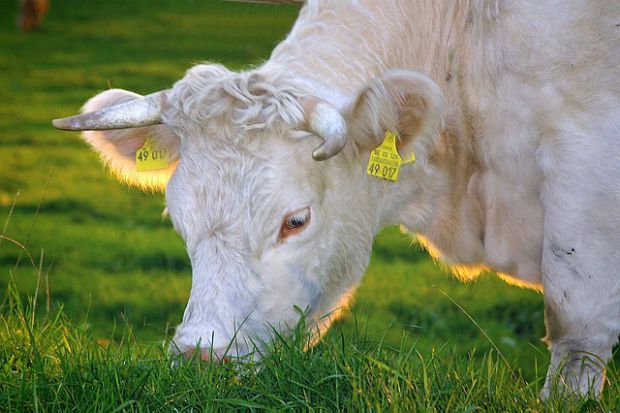
Sure, you can find some of these nutrients in plants, but comparing them to grass-finished red meat is like comparing a kiddie pool to the World Waterpark. Plants just don’t pack the same punch. You’d have to eat a mountain of kale, quinoa, or spinach to get the same nutrient boost you’d find in a modest steak. And let’s not even start on some plant-based products (cough bread cough) that are more foe than friend when it comes to your health.
Bottom line: High-quality, grass-finished meat isn’t just a luxury—it’s a health essential. It delivers all those vital nutrients in a single serving without making you feel like a grazing cow. Conversely, skipping out on nutrient-dense, responsibly sourced meat can open the door to a whole host of health issues.
Need proof? I’ve seen it firsthand. One of my clients, a lifelong vegetarian, dealt with allergy-like symptoms and even syncope (yep, fainting). After addressing her nutrient deficiencies and introducing goat meat into her diet (yup, goat’s got game), her symptoms vanished. She’s thriving now! And her story isn’t unique—I’ve heard similar transformations from many health practitioners.
Where to Get the Good Stuff
Not all meat is created equal. If you’re going to invest in your health, here’s Alberta-based farms producing grass-fed, hormone-free, antibiotic-free, glyphosate-free, and non-grain-fed meats:
- Sunworks Farm
- EarthWorks Farms
- Hoven Farms
- EAT Food for Life Canada
- Muriel Creek Cattle Co
- Top Grass Beef
- T.K. Ranch
- The Grazed Right
- Bar P Ranch
- Trail’s End Ranch
- Rafter 2 R Ranch
- Pura Vida Farm
Not from Alberta? No problem! Head to eatwild.com, a handy resource to find Canadian farmers near you offering clean, high-quality, grass-fed meat. Your health (and taste buds) will thank you!
Want To Get Started On A New Lifstyle Right Away?
Or
Would You Like A Plan To Achieve Your Fitness Goals?
Sign Up For Online Personal Training!



